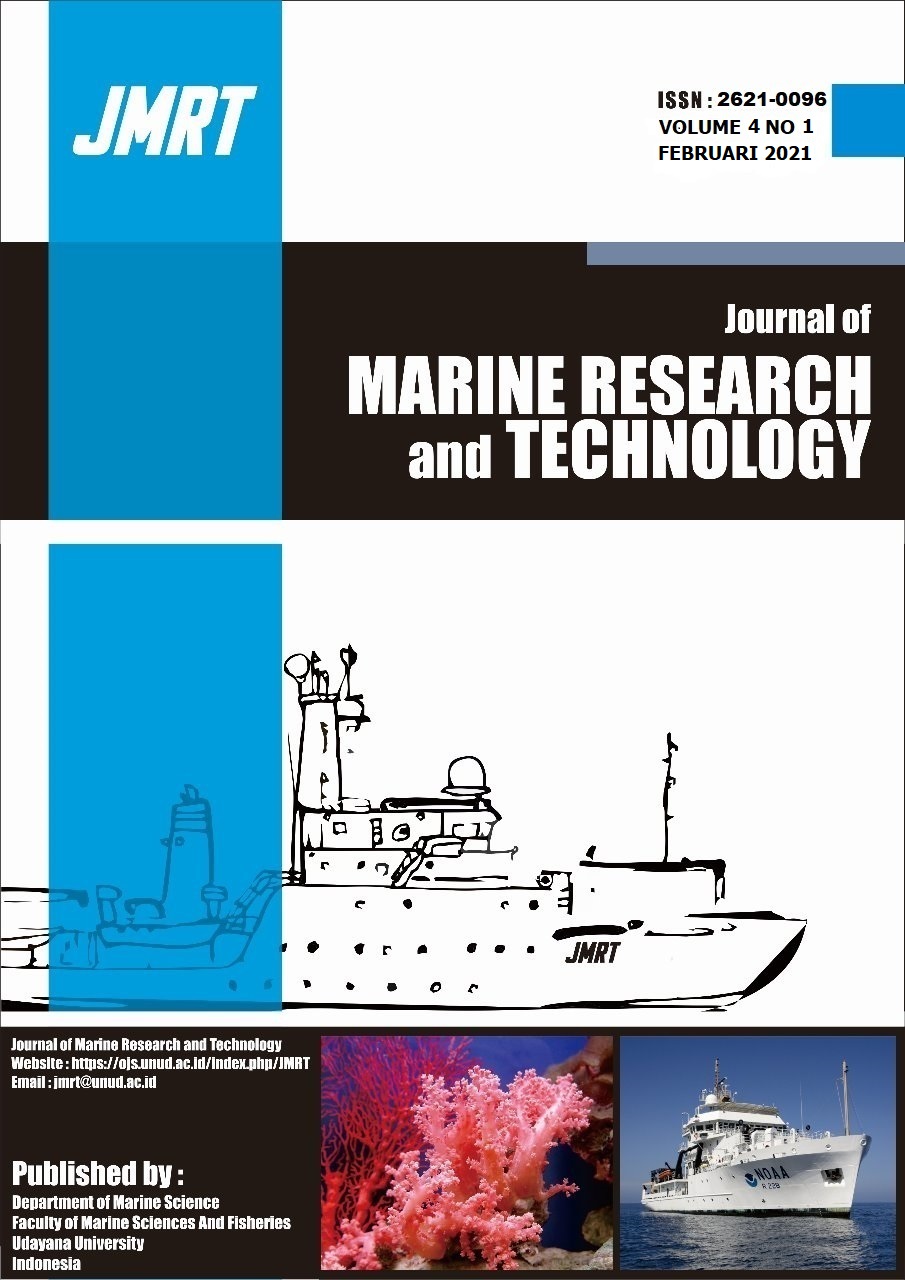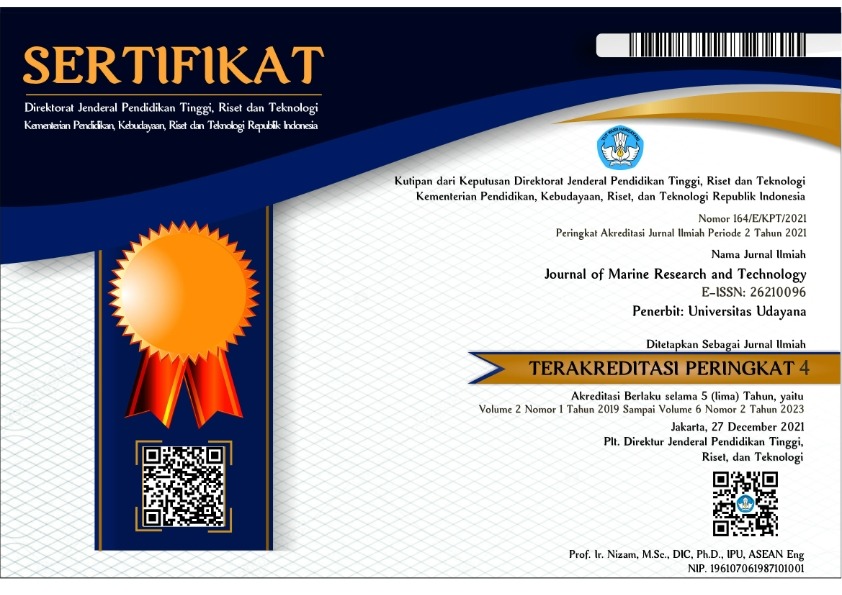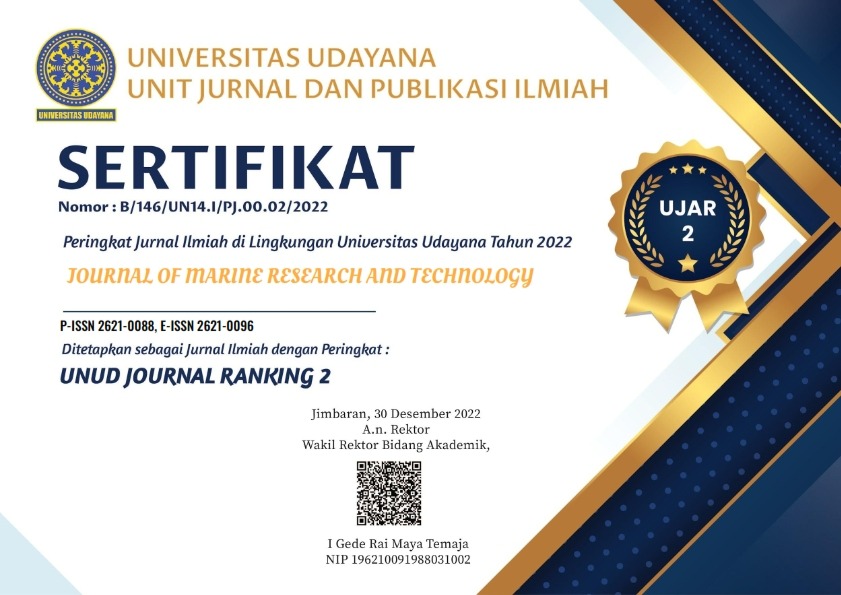Pertumbuhan Transplan Karang Lunak Sinularia polydactyla dan S. asterolobata Berdasarkan Metode Tebar Dasar dan Penempelan Substrat Pada Lokasi yang Berbeda
Soft Coral; Transplantation; Growth Rate; Survival Rate; Spreading method; Substrate-attached method
Abstract
Soft coral transplantations are widely used for rehabilitation of coral reef ecosystems and commercial needs with common method are substrated-attached and placed on the metal table frame. These methods are considered as costly. This study aimed to examine the difference in the average growth of transplanted soft corals Sinularia polydactyla and S. asterolobata, spreading on the seabed and substrate-attached methods at different location. Transplantation was conducted inside and outside Pegametan Bay, Buleleng. Soft coral fragments were spread on the seabed and attached with cement. The increased sizes and survival rates of the transplanted soft corals were observed every two weeks. The differences in the average growth rates among soft coral species, transplantation methods and locations were analyzed by three-factor ANOVA and survival rates were analyzed by using the Log-Rank test. The results showed no significant difference in the average growth rates between S. polydactyla and S. asterolobata (P =0,104) and transplantation methods (P=0,141). The average growth rate of transplanted soft corals outside was significantly higher (P=0,025) than those inside the bay. This study indicated that the interaction between soft coral species, methods, and location significantly differed the average growth rates of the transplanted soft corals. The average survival rates demonstrated that there was no significant difference among transplanted soft coral species within similar locations in both methods. In contrast, the average survival rates of transplanted soft coral outside were significantly higher than those inside the bay in both methods that reached >80%.
Downloads
Copyright Notice
The copyright to this article is transferred to Journal of Marine Research and Technology (JMRT). The copyright transfer covers the exclusive right and license to reproduce, publish, distribute and archive the article in all forms and media of expression now known or developed in the future, including reprints, translations, photographic reproductions, microform, electronic form (offline, online) or any other reproductions of similar nature.






